Computer models of the effects of an eruption event similar to the Columbia River Flood Basalt show that, despite massive injections of sulfur dioxide into the atmosphere, Earth’s climate rebounded much more quickly than expected. Plus, ORCs, lunar swirls, exoplanets, and diamonds.
Podcast
Show Notes
Odd Radio Circles swam galaxies
- CSIRO press release
- “MeerKAT uncovers the physics of an Odd Radio Circle,” Ray P. Norris et al., to be published in Monthly Notices of the Royal Astronomical Society (preprint on arxiv.org)
Spitzer catches collision in young solar system
- NASA press release
- “A Star-sized Impact-produced Dust Clump in the Terrestrial Zone of the HD 166191 System,” Kate Y. L. Su et al., 2022 March 10, The Astrophysical Journal
Lunar swirls trace topography
- PSI press release
- “Topographic Correlations Within Lunar Swirls in Mare Ingenii,” Deborah Domingue et al., 2022 March 2, Geophysical Research Letters
Turning down the city heat
- NASA press release
- “A quasi-experimental approach for evaluating the heat mitigation effects of green roofs in Chicago, Illinois,” Kathryn McConnell et al., 2021 September 25, Sustainable Cities and Society
Achievement Unlocked: 5,000 Exoplanets
- NASA press release
Mercury in the sky with diamonds
- Diamonds may stud Mercury’s crust (Science News)
Ancient climate rebounds after massive eruptions
- The Surprising Greenhouse Gas That Caused Volcanic Summer (Eos)
- “Volcanic Climate Warming Through Radiative and Dynamical Feedbacks of SO2 Emissions,” Scott D. Guzewich et al., 2022 February 1, Geophysical Research Letters
Chicxulub impact added sulfur to atmosphere
- Syracuse University press release
- “Massive perturbations to atmospheric sulfur in the aftermath of the Chicxulub impact,” Christopher K. Junium et al., 2022 March 21, PNAS
OneWeb satellites launching on SpaceX
- OneWeb press release
Transcript
As we start another week in this strange timeline, we keep finding that we have the corresponding strange mix of stories.
First off, there are ORCs in space. Things are colliding and swirling.
And of course, there is climate change both now and in the ancient past, oh-so-many exoplanets, and diamonds on Mercury.
We said it would be strange.
All this and more, right here on the Daily Space.
I am your host Dr. Pamela Gay.
And I am your host Erik Madaus.
And we’re here to put science in your brain.
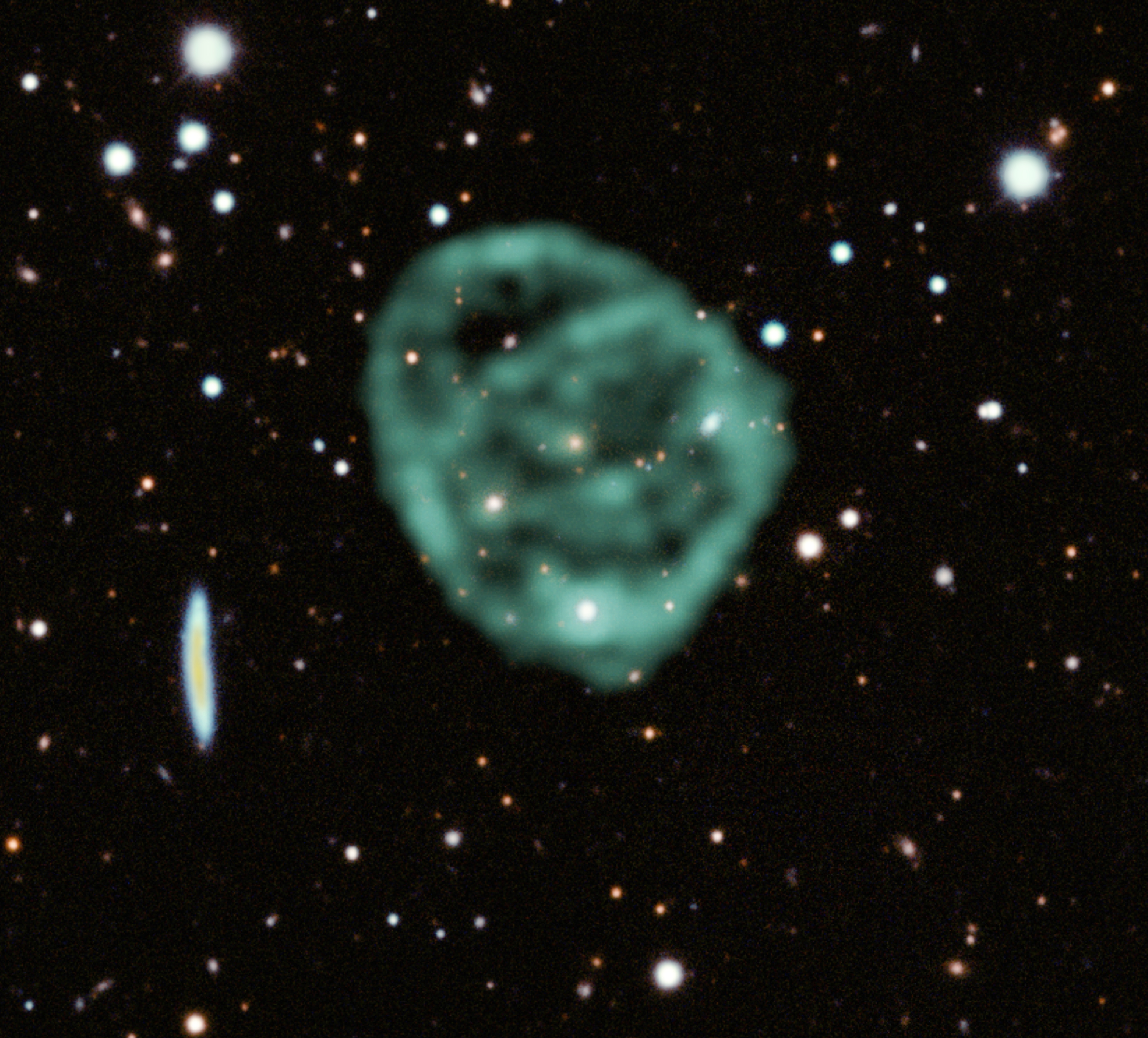
Today’s first story is one that screams, “Take me out of context!”
So I will.
According to Professor Ray Norris: No doubt the SKA telescopes, once built, will find many more ORCs.
Backing up and adding some context in, researchers using the MeerKAT and ASKAP radio telescopes have discovered odd radio circles surrounding the occasional galaxy, and since “odd radio circles” makes the acronym ORCs… well, that’s kind of an awesome acronym and these do look a bit like a child’s drawing of an ORC, so these weird structures are now called ORCs.
Beyond telling you they have a cool name, I can’t tell you much about them. They were first spotted in 2020 by the just-starting-to-be-commissioned ASKAP radio array in Australia. This is one of those fabulous cases of a new telescope getting turned on and we see something utterly unexpected. According to Norris: We know ORCs are rings of faint radio emissions surrounding a galaxy with a highly active black hole at its center, but we don’t yet know what causes them, or why they are so rare.
In a new Monthly Notices of the Royal Astronomical Society paper, researchers describe the most detailed observations of an ORC that have so far been captured. Appearing like a set of interlocking rings – rings that could fit sixteen Milky Ways inside of them – this odd structure is really like nothing previously seen.
Leading theories point to huge explosions, perhaps associated with merging supermassive black holes, super weird jets of energetic particles, or the shockwaves of a burst of star formation hitting surrounding material. These theories, however, are based on trying to fit known possibilities to something utterly new, and it’s reasonable to believe something not-yet-imagined is actually causing these structures. As study co-author Jordan Collier puts it: People often want to explain their observations and show that it aligns with our best knowledge. To me, it’s much more exciting to discover something new, that defies our current understanding.
Folks, there are ORCs out there, surrounding galaxies, just waiting to be understood. Isn’t the universe a weird and wonderful place?
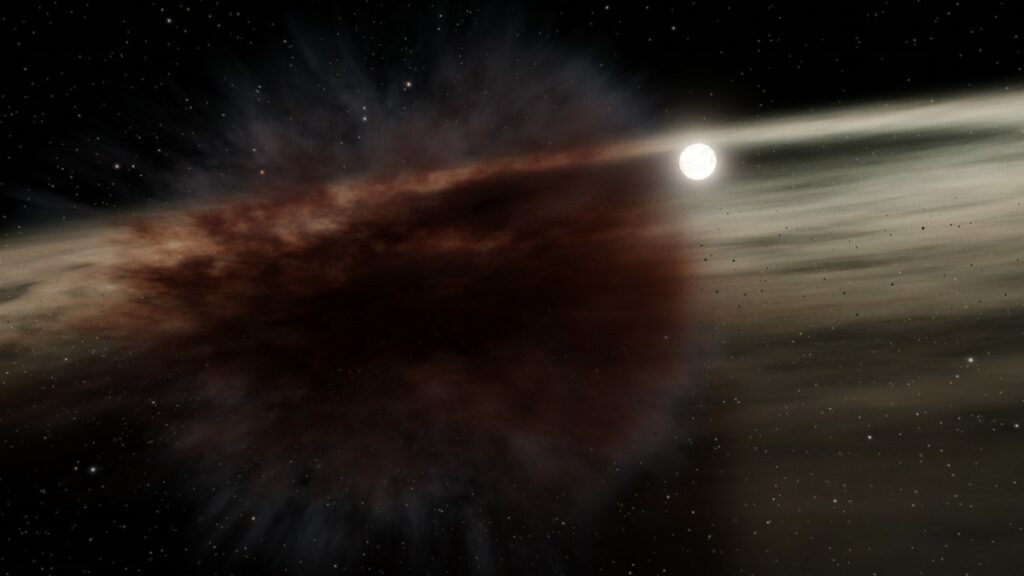
On my wall, I have a painting with the Neil Gaimen quote: A world in which there are monsters, and ghosts, and things that want to steal your heart is a world in which there are angels, and dreams and a world in which there is hope.
I love this quote, but it only seems to apply to our actual world and not the universe around us. Space is trying to kill us and every other planet out there.
Observations taken by the Spitzer Space Telescope of the young star HD 166191 revealed the violent actions of toddler planets wailing on one another. Spitzer took roughly 100 observations of this 10 million-year-old star between 2015 and 2018. This young system hasn’t yet formed full-fledged planets, but it does have large asteroid or dwarf planet-sized planetesimals that are sometimes colliding in ways that stick them together and are sometimes colliding in ways that smash them apart.
According to a NASA release on these observations: In mid-2018, the space telescope saw the HD 166191 system become significantly brighter, suggesting an increase in debris production. During that time, Spitzer also detected a debris cloud blocking the star. Combining Spitzer’s observation of the transit with observations by telescopes on the ground, the team could deduce the size and shape of the debris cloud. Their work suggests the cloud was highly elongated, with a minimum estimated area three times that of the star. However, the amount of infrared brightening Spitzer saw suggests only a small portion of the cloud passed in front of the star and that the debris from this event covered an area hundreds of times larger than that of the star.
Over time, this cloud of material expanded, and the dust became distributed throughout the system.
Spitzer looked at this system specifically because researchers hoped this kind of beautiful destruction would be common enough that they would catch it happening. And they did; collisions are simply in the nature of young solar systems. This research is published in a new paper in The Astrophysical Journal led by Kate Su, who says: By looking at dusty debris disks around young stars, we can essentially look back in time and see the processes that may have shaped our own solar system. Learning about the outcome of collisions in these systems, we may also get a better idea of how frequently rocky planets form around other stars.
This seems like a good time for a reminder that we have our Moon because something roughly the size of Mars struck the young, smaller Earth, and the heavier stuff largely formed Earth while the lighter stuff splashed up and formed our Moon. We are the product of the kinds of collisions Spitzer was observing.
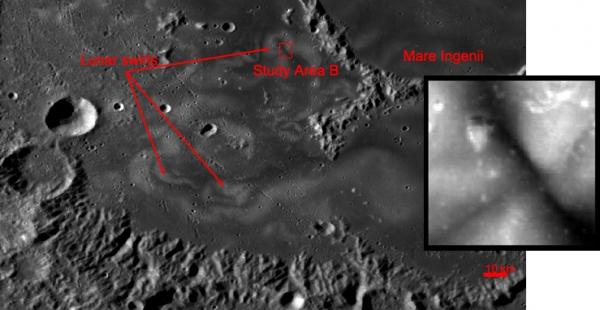
Today, we are still working to understand many of the features we see on that Moon. One of the oddest features is light and dark patterns in the lunar terrain. Called lunar swirls, these patterns are located where there are magnetic anomalies – places where a magnetic field can be found for unknown reasons. Most of the time, there is no correlation between these colored patterns and the shape of the landscape they sprawl across. That said, a new paper led by Deborah Domingue of the Planetary Science Institute finds that two lunar swirls actually do follow the landscape, with bright regions being lower and darker regions being higher.
In general, bright regions of the swirls are thought to be places where magnetic fields protect the surface material from the solar wind. This wind of high-energy particles will darken moon dust over time, creating the darker parts of these swirls.
‘In general,’ however, doesn’t mean this is always the case, and in the two exceptions this paper identifies, researchers need to ask if the swirls may have other explanations. As Domingue puts it: The question becomes how much do we understand the processing of the lunar surface and the migration of fine-grained materials. Swirls are not only a place to test our ideas on space weathering of the surface but of the efficiency of dust migration across the surface. If we are going to have long-term installations on the surface of the Moon, how do we protect against issues that fine-grained dust present to robots, habitats, space suits, and other machinery, let alone on the health and safety of humans present on the surface for long durations?
To really understand what is going on, we’re going to need to go explore these swirls more closely, by rover, robot, or human, but that kind of exploration is still years away, so for now, we shall stare at pretty pictures and try to pry out science.
Next up, let’s look back at our own planet Earth and the human-inflicted effects researchers are now trying to reference.

Anyone lucky enough to have lived in both a city and in a rural area has experienced the weird phenomenon that cities trap heat in a way the farms and fields just can’t. For me, growing up next to a dairy farm meant more snow days than my city-dwelling friends, but come summer, those warmer city streets became unbearably hot.
Sunlight hitting fields and forests gets used by plants, reflected into the sky, and otherwise doesn’t really build up to be released later. Asphalt, however, will absorb that sunlight, get unbearably hot, and radiate the heat into the air long into the night. The same is true of black tar roofs, cement, and a lot of the other defining factors in cities. The way buildings, roads, and parking lots retain heat is called the urban heat island effect, and it is responsible not just for overheated summer days but also for the corresponding energy demands of cooling systems and the negative health effects experienced by folks who may not be able to afford the energy to cool their homes.
This is a human-made problem, and it demands a human-made solution. Recent efforts have explored the effects of green roofs and Sun-reflecting surfaces, and by Sun-reflecting surfaces, I mean they are painting things white.
In a newly published study in the journal Sustainable Cities and Societies, led by Kathryn McConnell, researchers use LandSat 5 Earth-science satellites to study how effective three large green roof projects were at reducing the urban heat island effect [in Chicago, Illinois]. Those three sites were Millennium Park, City Hall, and a Walmart shopping center. Data were collected from 1990 to 2011, providing significant pre- and post-construction data.
The massive Millenium Park, with its rich foliage, was able to significantly lower temps and fully mitigate climate warming in its region. The smaller but also well-planted City Hall had some effect, but its region also began to warm over time as the city grew. And that Walmart? Well, it was built where a field used to be, and despite its green roof, the Walmart region was warmer than the prior natural landscape.
This is just the latest data to show there is no replacement for Mother Nature. Green roofs can help, and the more the better, but they aren’t the same as the natural landscape. As stated by coauthor Christian Braneon: In a lot of places, you might be developing an area that didn’t have something there before; it just had overgrown vegetation. You might think that putting a green roof on your new building would make a significant impact. But what we see is that a lot of impervious material may also be added there – such as a parking lot around the building. As a result, you might reduce the impact of the parking lot, but you certainly haven’t created the cooling effect that the overgrown vegetation had.
We’re going to look at some more climate change news from the past, but first, let’s touch on a couple of neat stories that came up this week.
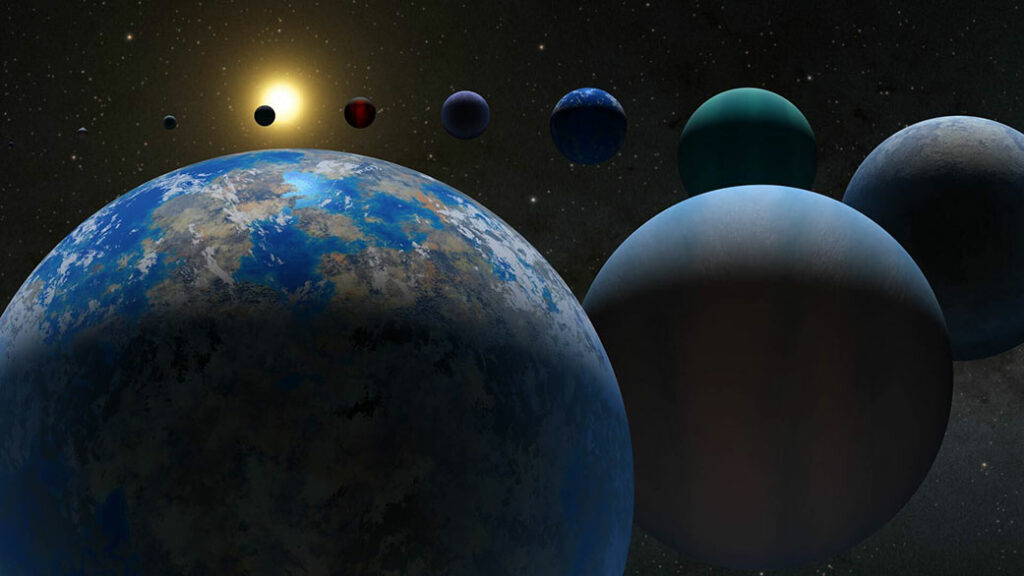
Last week, we shared a story about how several Kepler exoplanets had been re-analyzed and determined to be actually small stars and how that would set the quest for 5,000 confirmed exoplanets back just a little. Apparently, it set it back very little, because we are excited to note that yesterday, March 21, NASA announced that they surpassed that milestone with the addition of another 65 confirmations. Congratulations to everyone who has ever analyzed exoplanetary data and worked toward this goal.
Of those 5,000 planets, about 30% are gas giants, 35% are like Neptune, 31% are super-Earths, and the remaining 4% are terrestrial. That last number is expected to increase as our observing power increases, and we get more visibility into smaller and smaller worlds. Earth 2.0 is out there, and we’re going to find it sooner rather than later.
We’re going to include some fun links in our show notes for this story, including a data sonification video of all 5,000 plus exoplanets, so head over to DailySpace.org and check it out.
Finally, Mercury’s surface may be studded with diamonds. You heard that correctly – diamonds.
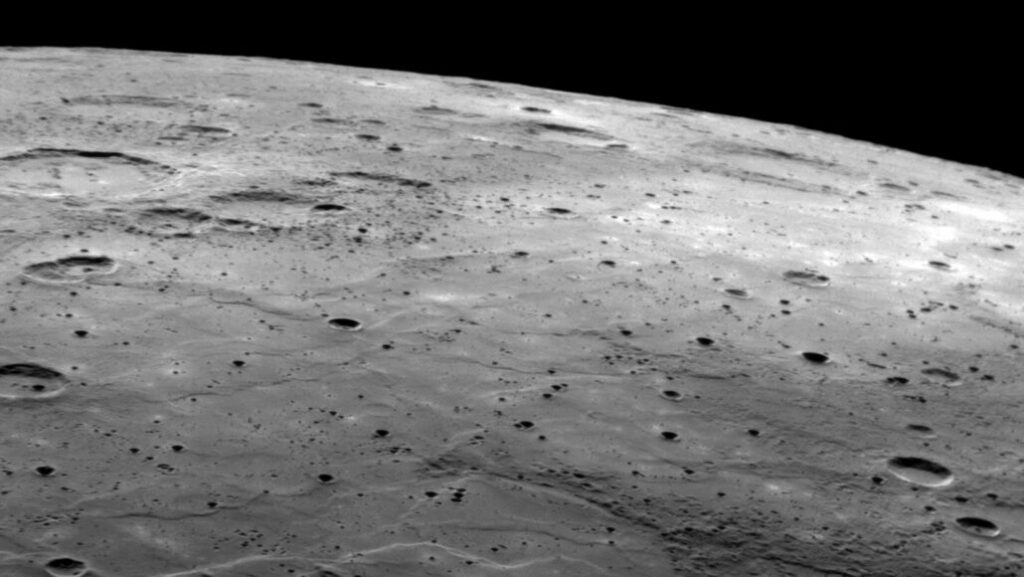
According to research presented at the recent Lunar and Planetary Science Conference, computer simulations showed that billions of years of meteorite impacts on the surface of Mercury actually had enough pressure and high temperatures to transform graphite into diamonds. Stranger still, the reason Mercury likely had so much graphite, to begin with, is, according to lead scientist Kevin Cannon, “that when [Mercury] first formed, it had a magma ocean, and that graphite crystallized out of that magma.”
So this crust of graphite gets bombarded meteors, and with no atmosphere to slow them down, those meteor impacts, Cannon explains, “create very high pressures and temperatures that can transform carbon into diamond.”
Now while it’s possible that some of those diamonds were later destroyed by further impacts, it should be noted that the melting point of diamonds is greater than 4000 degrees Celsius, so if this hypothesis proves true, there are likely still diamonds on the surface of Mercury, waiting to be found. ESA’s BepiColombo spacecraft will arrive at Mercury in 2025 and could detect infrared evidence of those diamonds.
We’ll let you know then if they find any.
Coming up next, we’re going to look at how sulfur affected the ancient climate here on Earth.

When we talk about climate change, there is definitely an air of doom and gloom about the stories. We hear rumblings in the scientific community of how close we are getting to a tipping point from which the climate may never recover, but new research published in Geophysical Research Letters suggests that the climate may be more resilient than previously understood.
If you live in the Pacific Northwest here in the U.S., you are likely familiar with the Columbia River Basalt Group. It’s an area of basaltic flood rock that basically takes up much of Washington and Oregon. And we mean… much. For context, take the ongoing eruption of Kīlauea and have it last for millions of years rather than decades, on and off, almost constantly. And then punctuate that long-term eruption with some large explosive ones, similar to the Hunga Tonga-Hunga Ha’apai eruption earlier this year.
Again, have this keep going for millions of years. Flood the region with 210,000 square kilometers of basalt, and you have the Columbia River Flood Basalt event.
On top of all that lava rock being deposited, the ongoing eruptions also released about 300 gigatons of sulfur dioxide, and that is a greenhouse gas which means hello, climate change! Of course, the eruptions also release carbon dioxide, another greenhouse gas, but analysis of the rocks in the Columbia River region show that the carbon dioxide levels weren’t enough to produce the kind of climate change also seen in the rock record.
And that’s why this particular paper looked at sulfur dioxide. The researchers wanted to understand just what type of effect that particular gas had on the global climate, and the results were about what you would expect. Now, we report these results with the caveat that because the team was using computer models and a lot of processing power, they were only able to model an eruption period of four years and track the climate response for a further sixteen years.
Even with that brief duration, the effects were pretty massive. Global temperatures dropped by 2 to 3 degrees Celsius on average, and seasonal temperature effects were larger – the Northern Hemisphere saw summer temps drop by 30 degrees Celsius and winter temps increased by 15 degrees. The sulfur dioxide rose up into the atmosphere and essentially created an umbrella effect that kept the Sun’s heat out and temporarily destroyed the tropopause. Additionally, the ozone layer was wiped out.
So where is the good news in all this doom and gloom? The researchers found that, after sixteen years, the climate had completely rebounded. Temperatures returned to normal levels, the humidity dropped back to pre-existing levels, and the ozone layer recovered. The catch here, though, is that the actual eruption lasted far, far longer, and it’s associated with two different extinction events.
Yes, the climate itself will recover. But we may not. Lead author Scott Guzewich notes: Even with as massive of a perturbation to the climate as this produces, the climate gets back to normal surprisingly quickly. If you’re thinking about a disaster on Earth in modern times, it shows that the climate is somewhat resilient, that even this large of an effect doesn’t push Earth past a tipping point.
The news isn’t all bad, but it’s not all good, either.
Next up, the team intends to model what happens when carbon dioxide is added to the mix and maybe even see what happens when you run the simulation longer.
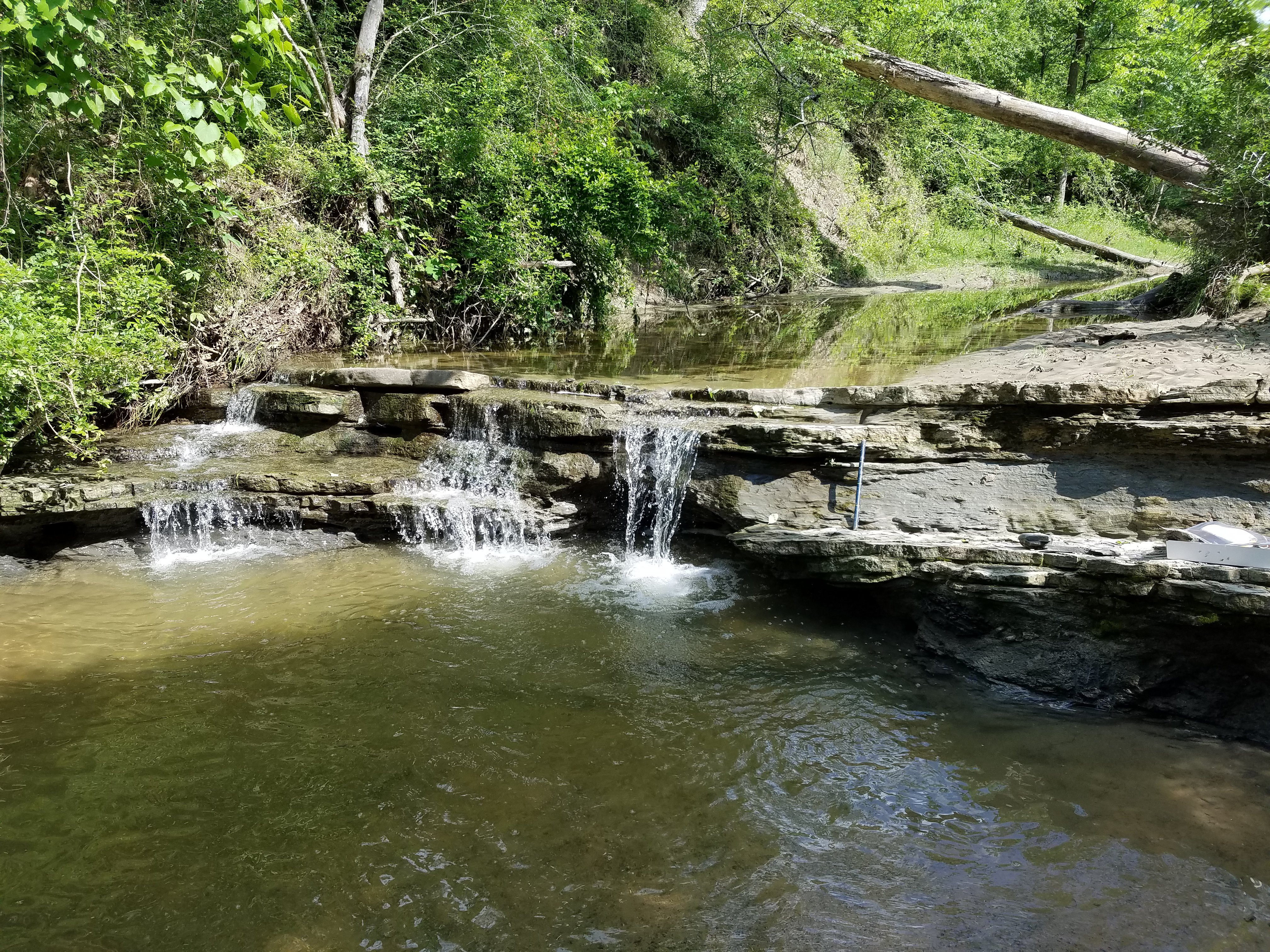
Volcanic eruptions apparently aren’t the only thing bringing sulfur to our atmosphere. New research published in Proceedings of the National Academy of Sciences found that the Chicxulub meteor brought the sulfur or released it into the atmosphere upon impact. Lead author Christopher Junium explains: The impact blast and fallout ignited widespread fires, which together with rock dust, soot, and volatiles ejected from the crater, blotted out the sun globally in an impact winter that may have lasted years, resulting in the extinction.
Not only does sulfur dioxide create an atmospheric umbrella above the ozone layer that cools the planet, but it also gets bombarded with ultraviolet radiation and ends up changed in the process. Then, because it’s a relatively heavy molecule, those sulfur gases sink back down to the surface over time and then end up in the rocks.
And of course, rocks are where geochemists get a chance to shine. Researchers collected rock samples in Central Texas and used geochemistry to trace how sulfur aerosols in the atmosphere transformed over time. Co-author Aubrey Zerkle notes: The unique fingerprints we’ve measured in these impact sediments provide the first direct evidence for the importance of sulfur aerosols in catastrophic climate change and cooling.
So not only did the Chicxulub impact cause massive fires and tsunami, but the sulfur aerosols in the atmosphere increased the environmental damage by creating acid rain that ran into the oceans and helped the marine extinction along. Additionally, as Junium goes on to explain: These sulfur aerosols would have extended the duration of post-impact climate change, taking an already beleaguered biosphere to the brink of collapse.
Happy Tuesday, everyone!

In a tiny amount of somewhat good news, we have an update on OneWeb and their upcoming launch schedule. Erik?
As we mentioned in our show about a week and a half ago, the sanctions imposed on Russia in response to its invasion of Ukraine are causing Russia to impose its own sanctions in return. One of the casualties of these sanctions is the British satellite Internet company OneWeb, which prepaid Roscosmos through the french company Arianespace for several Soyuz launches to build their constellation of satellites. Roscosmos has indicated that they have no intention of returning the money OneWeb paid for launches that they will never be able to use.
On March 21, OneWeb announced that they have made arrangements with SpaceX to launch the rest of the satellites needed to complete their constellation, with the first launch to take place sometime later this year. This is an interesting situation because SpaceX operates Starlink, their own satellite internet service. However, the two constellations serve different markets, with SpaceX serving individual residential customers and OneWeb businesses and governments. The precise details of the arrangement were confidential.
It’s important to remember that SpaceX is also in the business of providing launch services, and they’ve been striving to become the launch provider of choice for companies looking to put satellites in a variety of orbits. Part of this involves providing launch services for anyone, even companies that might be competing in the satellite Internet market. If they were to have refused to launch OneWeb’s satellites, they could have found themselves running afoul of anticompetition laws in the United States.
Instead, they are leveraging the opportunity to foster good relationships with the United Kingdom, one of the major partners in OneWeb, and also show they are an alternative for other European companies who are going to face problems getting to orbit because Soyuz and Proton are no longer an option.
A rising tide lifts all boats, as they say.
This has been the Daily Space.
You can find more information on all our stories, including images, at DailySpace.org. As always, we’re here thanks to the donations of people like you. If you like our content, please consider joining our Patreon at Patreon.com/CosmoQuestX.
Credits
Written by Pamela Gay, Beth Johnson, Erik Madaus, and Gordon Dewis
Hosted by Pamela Gay, Beth Johnson, and Erik Madaus
Audio and Video Editing by Ally Pelphrey
Content Editing by Beth Johnson
Intro and Outro music by Kevin MacLeod, https://incompetech.com/music/


 We record most shows live, on Twitch. Follow us today to get alerts when we go live.
We record most shows live, on Twitch. Follow us today to get alerts when we go live.